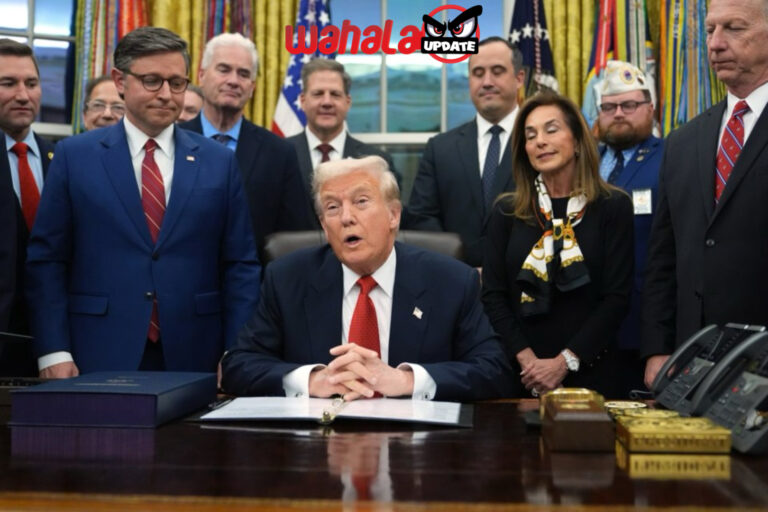On November 12, 2025, in Washington D.C., President Donald Trump signed Bill H.R. 5371, officially ending the longest U.S. government shutdown in history, which had lasted a staggering 43 days.
This historic shutdown, beginning on October 1, paralyzed numerous federal agencies and left over a million workers furloughed.
The funding bill secured federal operations through January 30, 2026, allowing the government to reopen after a damaging standoff primarily over Affordable Care Act subsidy disputes.
Historic Shutdown Shatters Records
The shutdown unprecedentedly broke records, impacting millions of Americans.
The House of Representatives passed the funding measure with a 222-209 vote, with six moderate Democrats joining Republicans, bypassing broader Democratic demands for continuing health care subsidies.
The shutdown wrought extensive economic damage. Over 20,000 flights were disrupted causing widespread travel chaos.
Essential services like the Supplemental Nutrition Assistance Program (SNAP) were slashed, putting millions of vulnerable Americans at risk of hunger.
The prolonged closure not only hurt working families but stifled business operations nationwide.
Political Battle Over Healthcare Funding
Republicans refused to extend funding for the subsidies, demanding conditions that Democrats rejected.
Democrats insisted any funding bill must include continuous coverage for low-income Americans relying on these federal supports.
The divided Congress failed to reach a compromise before the October 1 deadline, prompting the shutdown. Lawmakers on both sides blamed each other for using Americans as pawns.
The freeze on government functions performed by the opposing party’s unwillingness to budge left the nation griping with frustration and hardship.
Mixed Votes, Fragile Alliance
Intriguingly, six moderate Democrats crossed party lines to join Republicans in passing the funding bill.
Jared Golden, Adam Gray, Marie Gluesenkamp Perez, Don Davis, Henry Cuellar, and Tom Suozzi voted in favor, triggering backlash from their own party.
Their pragmatic stance reflected concern for ending the economic pain over political loyalty.
However, the narrow 222-209 majority confirmed grave divisions.
Democratic leadership expressed disappointment over the repeal of subsidy demands, warning the bill compromises vulnerable populations.
Yet for many, reopening government outweighed continuing political brinkmanship amid visible human suffering.
Furloughed Workers Speak Out
More than one million federal employees faced unpaid leave during the shutdown.
For many, the shutdown was not a political game but a brutal financial crisis. Stories surfaced of families struggling to pay rent, mortgages, and basic bills.
Stress over lost income compounded by uncertainty stirred anxiety and outrage nationwide.
One furloughed worker described the shutdown as a “painful betrayal” of public servants risking their livelihoods due to elected officials’ stubbornness.
Essential frontline workers stayed at their posts but under precarious circumstances.
The shutdown exposed structural vulnerabilities in federal workforce protections.
Economic Fallout and Recovery Challenges
The economic price tag soared. Analysts estimated billions lost in economic output due to halted operations and delayed federal contracts.
Tourism, transport, social programs, and small businesses dependent on government activity suffered sharp setbacks.
The shutdown’s ripple effects stretched beyond Washington, ravaging communities across America.
President Trump hailed the bill’s signing as a victory, promising the government would not shut down again.
Nonetheless, political tensions simmer.
Moves to reform Senate filibuster rules to prevent future deadlocks emerged amid public demand for more stable governance.
Controversial End Amid Continued Conflict
Despite ending the shutdown, the controversy it symbolized intensifies.
Many question why Congress failed to act sooner, casting blame widely.
Critics lambasted both parties for prioritizing political gamesmanship over citizens’ welfare, highlighting a government dysfunction starkly visible to all.
While the government operates again, deep partisan divides and unresolved policy disputes foreshadow further clashes.
The shutdown may be over, but the political war continues.
President Trump signs bill ending record 43-day U.S. government shutdown. House passes funding despite healthcare subsidy disputes.
Shutdown furloughed 1 million workers and caused billions in losses, flight disruptions, and benefit cuts. Recovery begins amid political tensions.
The longest shutdown in U.S. history finally concluded with President Trump’s signature, but the scars remain deep.
This record-breaking closure showcased profound political dysfunction and left millions scrambling, setting the stage for continued battles over America’s future.
Share your thoughts, was reopening worth the political price?
What reforms must come next to protect Americans from shutdown woes?
Join the conversation with us.


